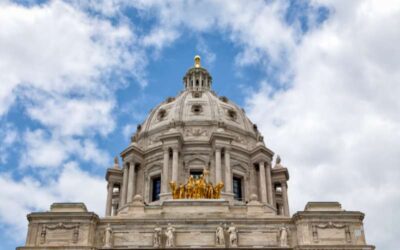Additional Reporting Recommendations
Amidst the current crisis, two major pieces of stimulus legislation were signed into law:
- The Families First Coronavirus Response Act (FFCRA)
- The Coronavirus Aid, Relief and Economic Security Act (CARES)
Both acts provide opportunities for businesses, but also require additional tracking for proper reporting. Our recommendations for tracking related to payroll tax credits and for tracking related to the Paycheck Protection Program (PPP) Loan are below.
Payroll Tax Credits Available
We recommend employers set up new pay codes for each credit listed below. The pay code should be set-up as regular taxable wages and subject to all tax types including:
- Federal and state income tax withholding
- Social security
- Medicare
- State and federal unemployment
Employee Retention Credit (CARES)
Refundable tax credit equal to 50 percent of qualified wages paid to employees after March 12, 2020 and before January 1, 2021, up to $10,000 of qualified wages per employee. This credit is not available if the entity took out a PPP Loan.
Emergency Paid Sick Leave (FFCRA)
Refundable tax credit equal to regular pay of up to $511 per day and up to 10 days for employees who are affected by COVID-19. The maximum credit is $5,110 per employee.
Expanded Paid Family Medical Leave (FFCRA)
Refundable tax credit equal to 2/3 of regular pay up to $200 per day and up to 10 weeks for employees who are caretakers for those affected by COVID-19. The maximum credit is $10,000 per employee.
Additional details on each credit can be found on our COVID-19 Resource center page. Employers utilizing the PPP Loan cannot use the same wages for the credits under the FFCRA. In addition, employers claiming the employee retention credit cannot use the same wages for the sick leave and family medical leave credits.
Claiming Credits & Applying for Refunds
Employers have three options for utilizing the eligible credits and/or claiming refunds:
- Claim the entire credit when filing the subsequent Form 941 (Employer’s Quarterly Federal Tax Return). Second quarter 2020 is due July 31, 2020.
- Short payroll tax deposits by the expected credit.
- File Form 7200 (Advance Payment of Employer Credits Due to COVID-19).
- Use the form when the expected credit exceeds payroll tax liability
- Can be filed more than one time each quarter
- Each form is cumulative for the quarter
- Form(s) to be reconciled on your quarterly Form 941
- Keep a copy of all Form 7200s filed
For employers that have eligible credits, we recommend shorting your payroll tax deposits first, followed by using Form 7200 to the extent that additional refundable credit is available. This will provide the most timely return of expenditures. The IRS is currently updating forms and systems to accommodate the new credits. No changes are expected for the Form 941 for first quarter 2020, this return is due on or before April 30, 2020. The second quarter form 941 is expected to have additional line(s) or worksheet(s) to reflect the advanced payments reported on Form 7200 and/or credit calculations.
Employment Tax Return Filed by a Third Party
Third parties preparing employment tax returns on behalf of others are not entitled to keep the credits. The employer is entitled to the credits for wages paid to employees.
Third party filers such as ADP, Paychex, Paylocity, SmartHR and others are all working on solutions to reduce the tax liability amount remitted related to eligible credits. We recommend keeping in close contact with the third-party payroll provider. Please watch their communications carefully.
Paycheck Protection Program Loan Recommendations
PPP Loans have very strict rules as to what the funds can be spent on, to help you stay in compliance with the rules we recommend the following:
- Separate Bank Account: We recommend clients set up a separate (new) bank account for the PPP funds, so they can easily be traced to use for appropriate purposes. Ideally, you would pay the qualifying items out of this account. However, if this is not possible, we recommend continuing to pay those expenses from other accounts and keep a detailed record of what is reimbursed to other accounts for a clear tracing of these funds.
- What Can the Funds be Used for: Generally, the funds can be used in the eight weeks following the loan, for payroll costs, rent, utilities and interest (not principal) on loans. More specifically, these costs include:
- Payroll: wages, tips, and other similar compensation, employer portion of SUTA, employer portion of health insurance, dental insurance, and health savings account contributions. Payroll does not include employer portion of FICA, which is Social Security and Medicare.
- Rent: rent payments on leases dated before February 15, 2020.
- Mortgage Interest: payments of interest on mortgage obligations incurred before February 15, 2020.
- Utility Payments: payments of utilities based on contracts that were in effect before February 15, 2020.
Additional Guidance is Needed Related to the Following Items
Because the CARES Act specified the funds could be used for expenses paid and incurred within the eight weeks following the loan date, there are a number of things to be clarified, including:
- Payroll costs paid in the eight-week period, but related to the pay period before the loan proceeds were received.
- Rent payments for the month of the loan and the final month included in the 8-week period.
- Example: If the loan disbursement occurs on April 10th, does the rent for the month of April count or does the rent for the month of June count?
- Mortgage Interest: is this the amount based on the due date of the payments or based on the date the interest was incurred?
- Utility Payments: which utilities will count for this? Will cell phones and internet count?
The Interim Final Rule question (r.) asks on what the proceeds can be spent. In the answer portion of the question “interest payments on any other debt obligations that were incurred before February 15, 2020” is included as a permissible use of the funds. However, in the section on loan forgiveness of the interim final rule only mortgage interest is included as to the portion that is forgiven.
Additional Resources
New information is being released daily, and in some instances, is in direct contrast to prior guidance. The following are resources to keep you up-to-date.
U.S Department of Labor COVID-19 Resource
This page includes Fact Sheets and FAQ’s for the FFCRA credits. The FAQs have examples and documentation requirements for both employer and employee when an employee takes paid sick leave or expanded family medical leave.
IRS.gov Coronavirus Tax Relief
Find the latest news releases, FAQs issued by the IRS and much more.
Minnesota Department of Revenue – our Response to COVID-19
See the latest news releases, FAQs issued by the MN Department of Revenue and information on filing and payment deadlines.
US Department of the Treasury – Assistance for Small Businesses
More information on the paycheck protection program including applications, FAQs and more.
How can we help?
Subscribe to our COVID-19 email list to have timely updates, tax implications, recent legislations and much more delivered right to your inbox!



